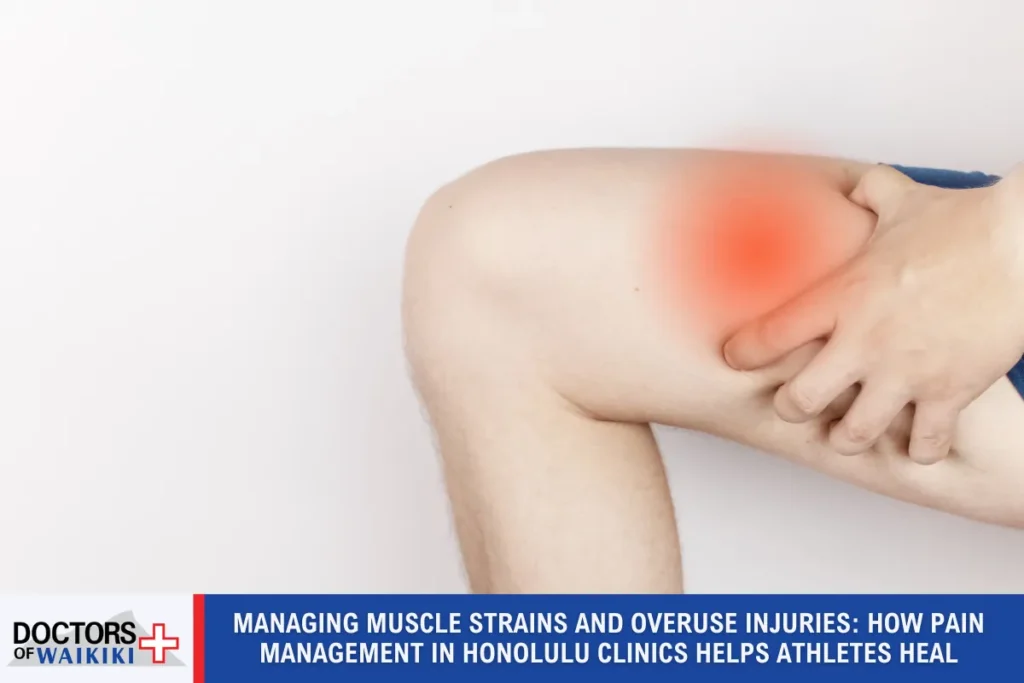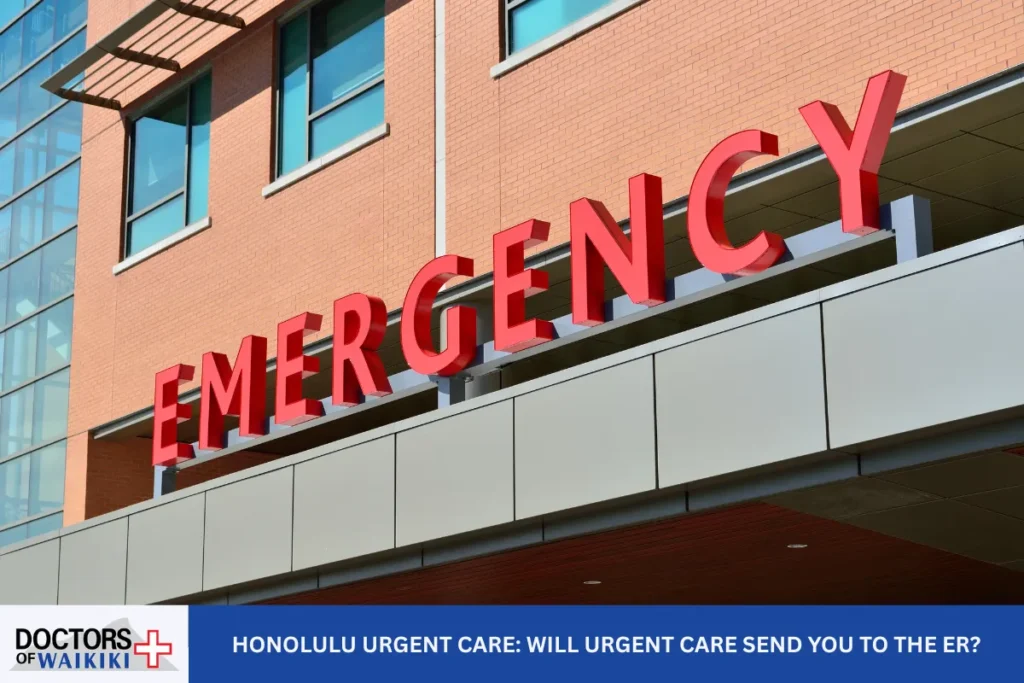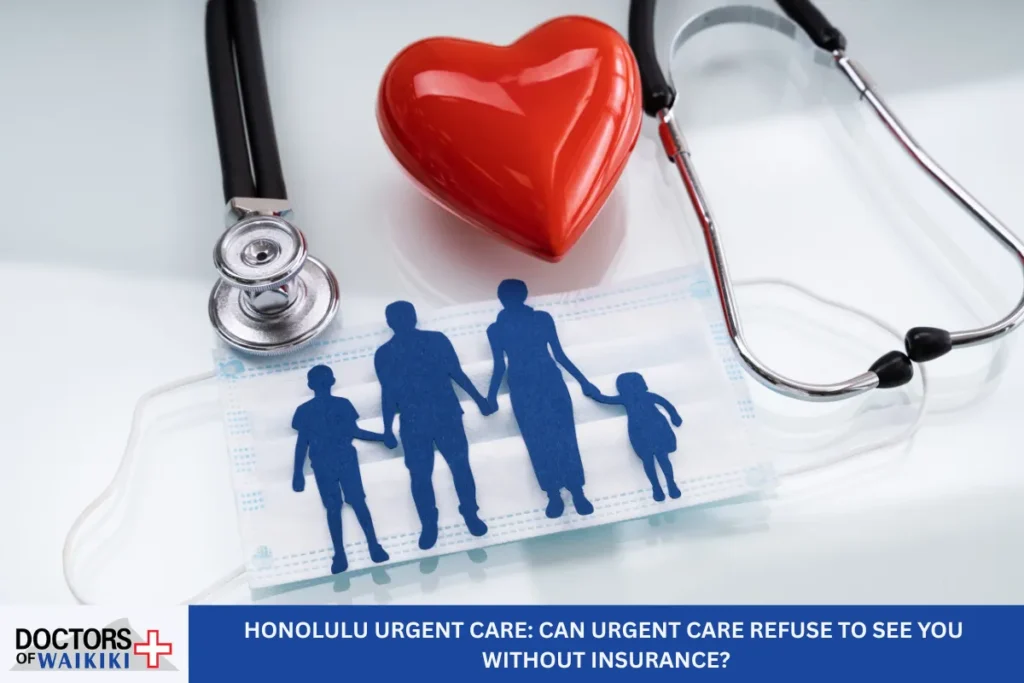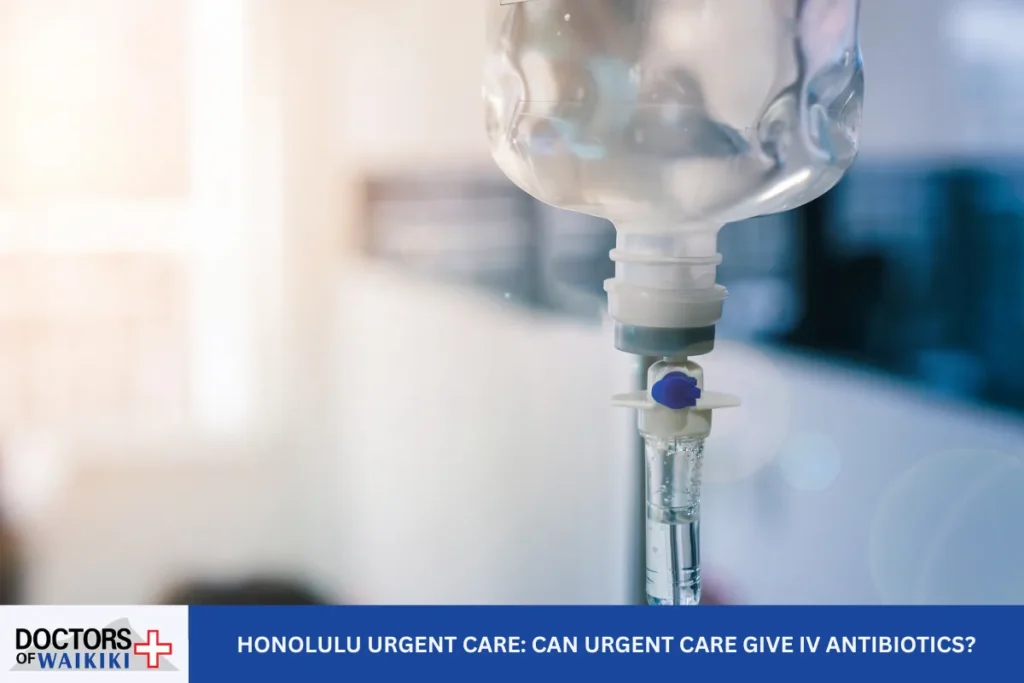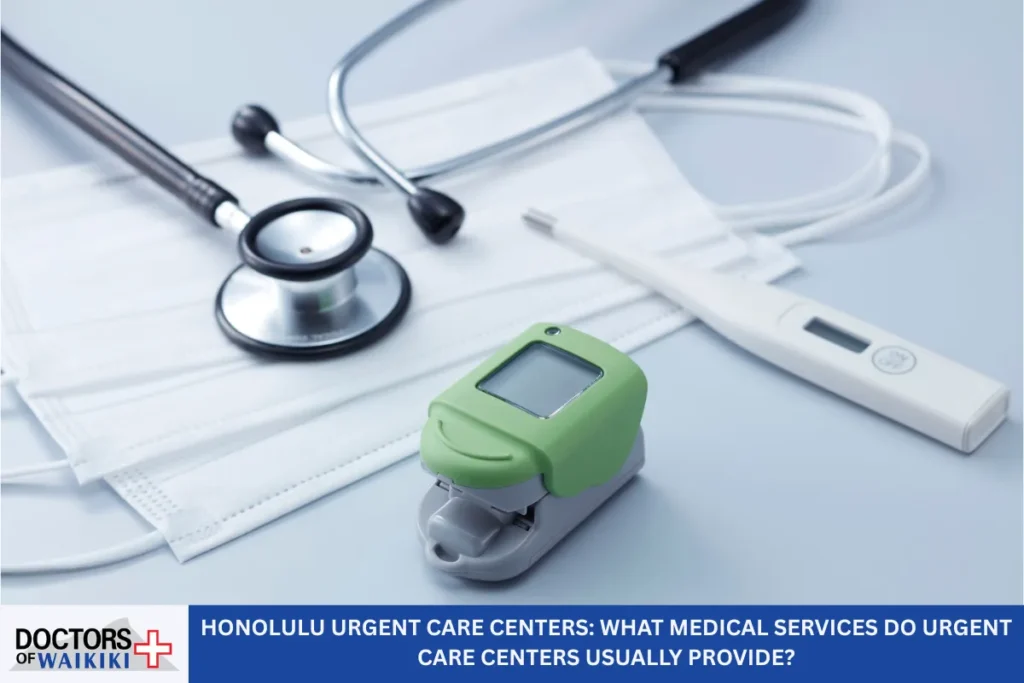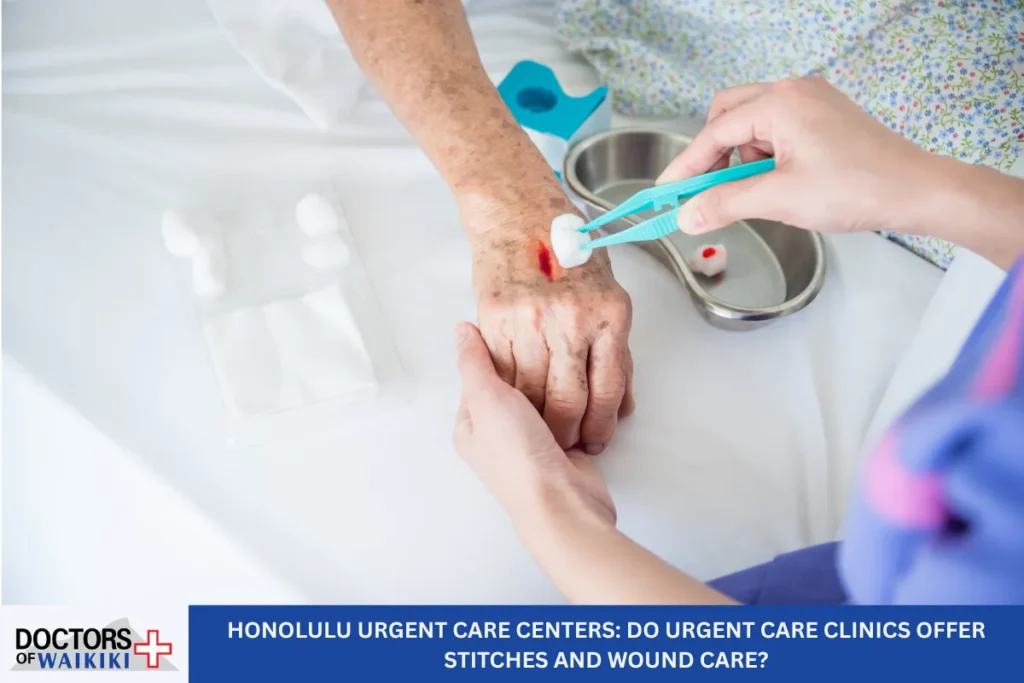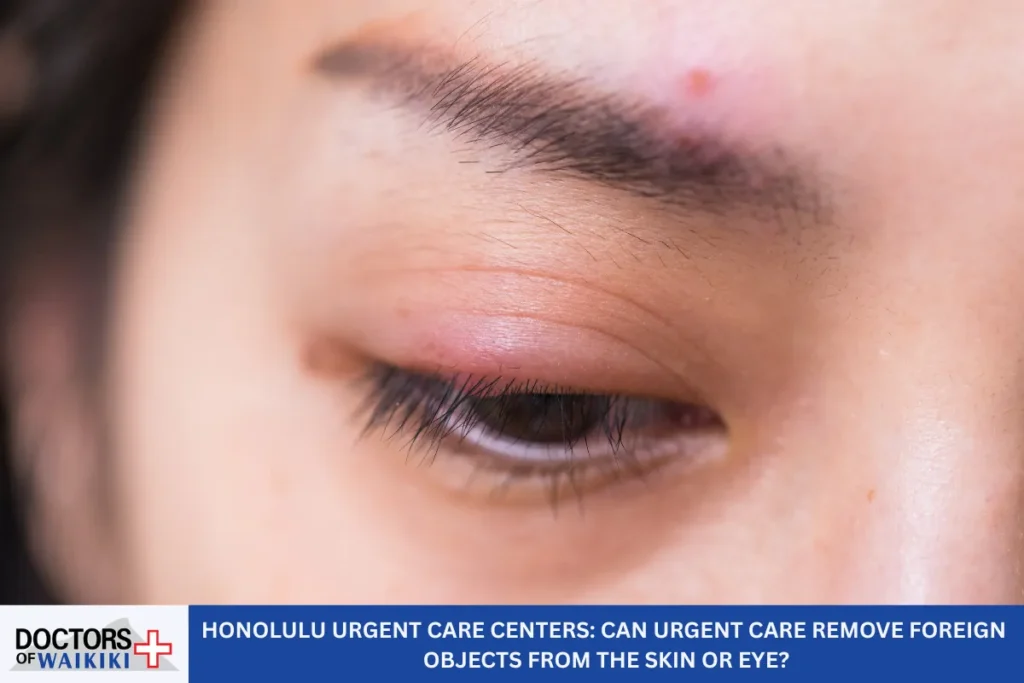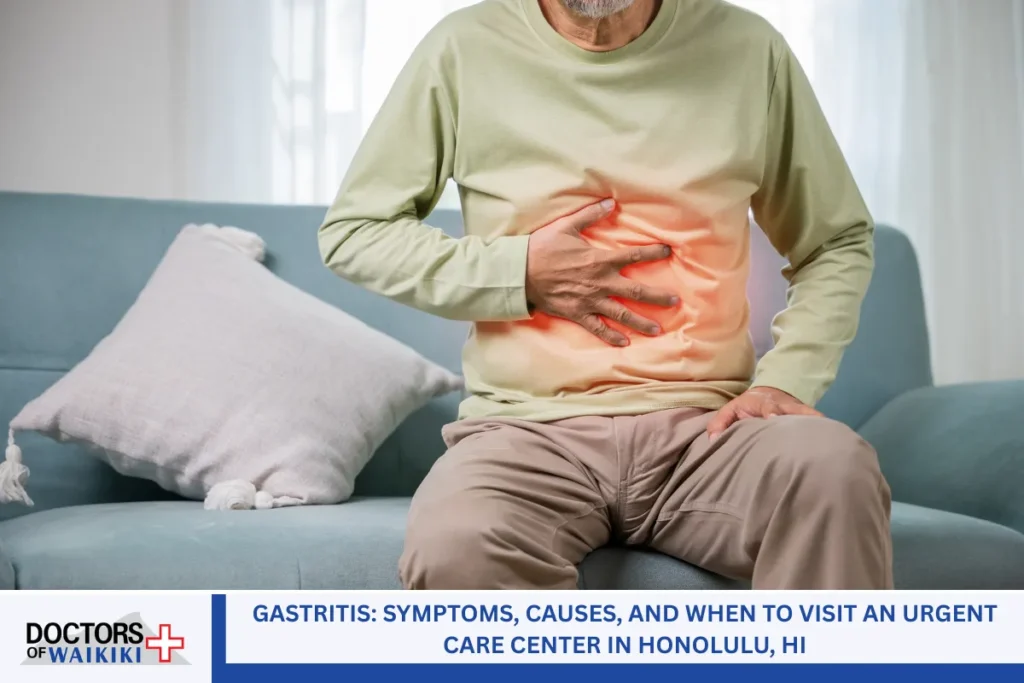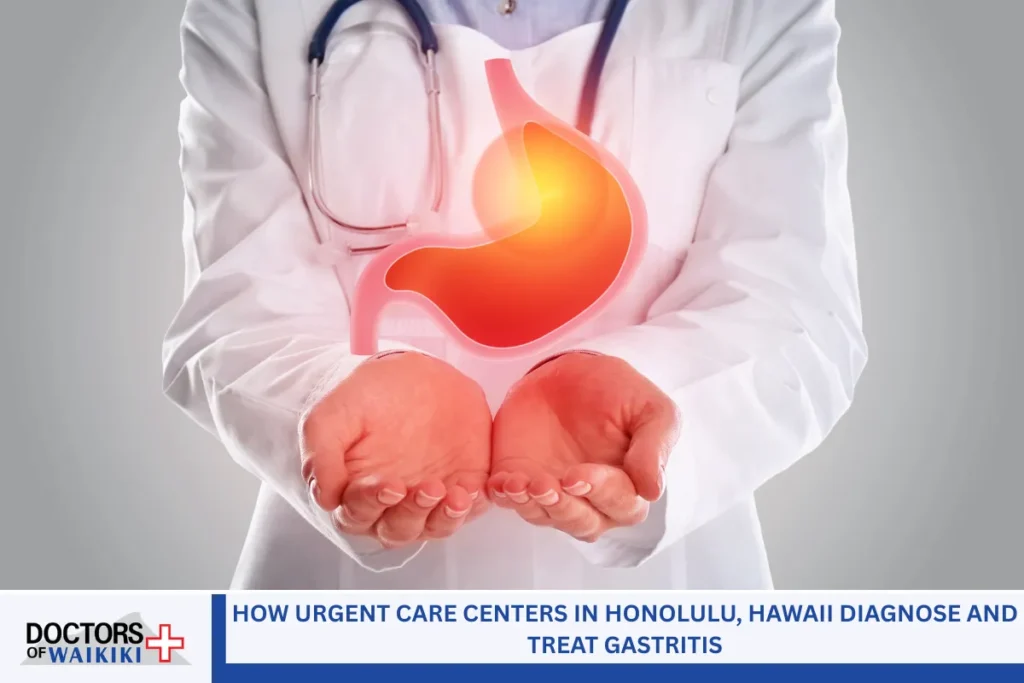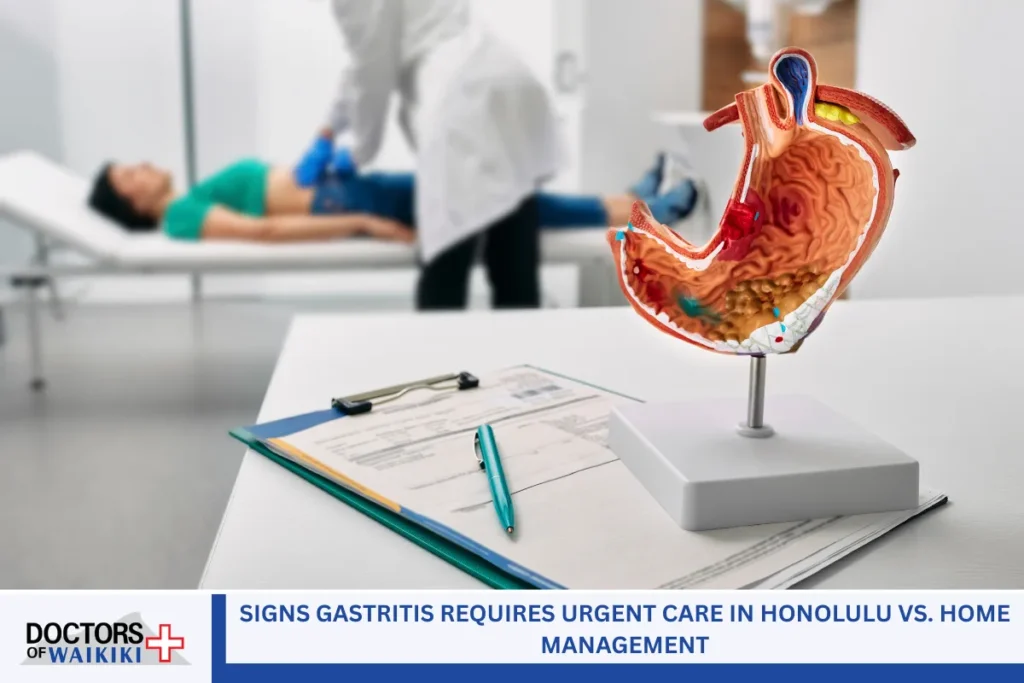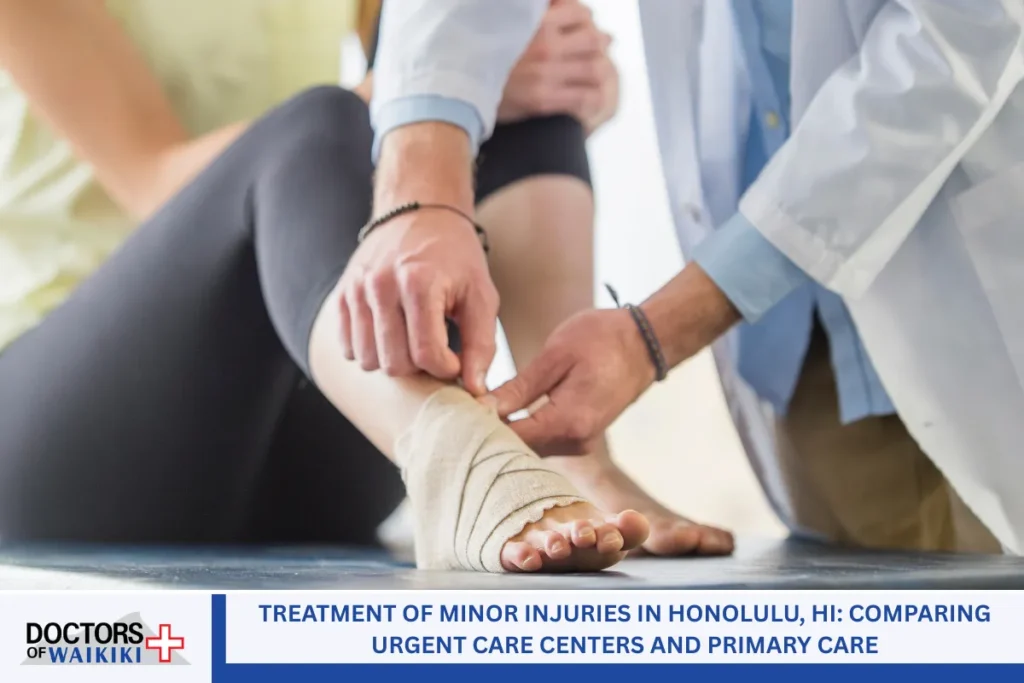Staying active in Honolulu is an integral part of the local lifestyle. With its ocean, mountains, and year-round sunshine, it’s no wonder that locals and visitors alike enjoy activities such as surfing, hiking, paddling, and running, among others. But with consistent physical activity comes the risk of injuries, especially muscle strains and overuse conditions. That’s where pain management in Honolulu becomes essential. Whether you’re a recreational athlete or training at a competitive level, proper care can make a big difference in healing and staying active safely.
In this guide, we’ll break down what muscle strains and overuse injuries are, why they happen, and how clinics in Honolulu help athletes recover using a combination of modern treatments and personalized care.
Understanding Muscle Strains: What Happens in the Body

A muscle strain occurs when a muscle is stretched beyond its limit, causing tiny tears in the fibers. This kind of injury can happen suddenly or develop over time due to repeated stress. Strains are common in the legs, back, and shoulders—areas that are often used in sports and daily activities.
What Causes Muscle Strains?
In Honolulu’s active community, muscle strains are often caused by:
- Inadequate warm-ups before exercise
- Lifting something too heavy, especially with poor form
- Sudden changes in movement, like jumping or sprinting
- Repetitive motion over time, such as in swimming or paddling
Even people who exercise regularly can suffer strains if their muscles are fatigued or not given enough recovery time.
Symptoms of Muscle Strains
You may have a strain if you experience:
- Sharp or lingering pain in a muscle
- Swelling, redness, or bruising
- Muscle weakness or inability to use the muscle normally
- Pain that worsens with movement or touch
Overuse Injuries: The Slow Burn of Repetitive Motion
Unlike muscle strains, which often happen suddenly, overuse injuries develop gradually. They occur when you repeatedly stress a part of your body without giving it enough time to recover. This constant wear and tear eventually leads to inflammation, pain, and a reduction in function.
Common Overuse Injuries in Honolulu
Thanks to the city’s outdoor-friendly climate, people are frequently engaging in:
- Long-distance running around Kapiʻolani Park or Diamond Head
- Surfing on the South Shore
- CrossFit and gym-based high-intensity workouts
- Outrigger canoe paddling in the open ocean
These activities, when done often and without enough rest, can lead to:
- Tendinitis (inflammation of tendons)
- Runner’s knee (pain around the kneecap)
- Shin splints (pain along the shin bone)
- Stress fractures (small bone cracks)
Signs You Might Have an Overuse Injury
These injuries often develop over time, so it’s essential to identify them early. Watch for:
- Gradual increase in pain during activity
- Stiffness or soreness that doesn’t go away with rest
- Swelling or tenderness in specific joints or muscles
- Reduced performance or fatigue in your usual routine
The Importance of Proper Pain Management in Honolulu

Pain is the body’s way of signaling something’s wrong—but it’s not always easy to interpret. That’s why pain management in Honolulu plays a vital role. Instead of pushing through discomfort or relying solely on rest, seeing a pain management specialist offers a more accurate diagnosis and a structured path toward recovery.
Why See a Pain Management Professional?
Athletes and active individuals benefit from professional care because:
- They can identify the exact source of pain (muscle, joint, tendon, etc.)
- Treatment plans are tailored to your activity level and goals
- They help avoid long-term complications by addressing the root cause
Honolulu clinics understand the island’s culture of movement and craft treatments that support both healing and a safe return to action.
Personalized Assessments: The First Step to Healing
Every injury is different, and that’s why a personalized assessment is crucial. Pain management clinics in Honolulu start with a thorough evaluation that may include:
- Asking about your activity routine, pain history, and lifestyle
- Physical movement tests to check strength, flexibility, and balance
- Imaging tools like X-rays or MRIs if deeper insight is needed
This initial step helps healthcare providers determine whether you’re dealing with a muscle strain, tendon issue, joint misalignment, or something else entirely.
Non-Surgical Pain Relief Options Available in Honolulu

One of the biggest advantages of seeing a pain specialist is access to non-invasive and low-risk treatments. These options are widely used in Honolulu clinics and often combine modern techniques with a holistic approach.
Types of Non-Invasive Treatments
- Manual Therapy
- Includes massage, myofascial release, and stretching techniques to reduce tension and improve mobility.
- Cold and Heat Therapy
- Ice is used to reduce swelling, while heat can ease tight muscles and improve circulation.
- Electrical Stimulation (TENS)
- Sends mild electrical impulses to nerves to block pain signals and promote healing.
- Ultrasound Therapy
- Uses sound waves to stimulate deep tissues and improve blood flow to the injured area.
These therapies are often part of a larger rehab plan, giving the body the support it needs to recover without relying on medications or surgery.
Role of Physical Therapy in Recovery

In Honolulu, physical therapy is one of the most trusted and effective tools in pain management. Therapists help you rebuild strength, flexibility, and confidence in your movements.
What to Expect from Physical Therapy
- Stretching exercises to restore the full range of motion
- Strength training to stabilize joints and muscles
- Balance and coordination work to prevent falls or re-injury
- Guided return-to-sport programs that ease you back into your activity safely
Honolulu therapists understand the specific demands of local sports and activities, which allows them to tailor treatments for surfers, runners, hikers, and more.
Recovery Is More Than Just Treatment: The Need for Rest
While active recovery is important, sometimes the body needs time to rest. Honolulu’s pace of life can make it tempting to jump back into action too soon, but rest is a key part of healing.
Signs Your Body Needs More Rest
- Pain gets worse after activity
- You’re feeling constantly fatigued
- You notice swelling or inflammation even after a light workout
Clinics often incorporate rest into their treatment plans, encouraging athletes to take days off and focus on gentle activities such as walking, swimming, or stretching.
Preventing Future Injuries Through Smart Training

Once healed, the goal is to stay injury-free. Honolulu clinics help patients develop preventive strategies that make sense for their lifestyle and sport.
Tips to Avoid Repeat Injuries
- Warm up thoroughly before exercise
- Mix up your routine to avoid stressing the same muscles
- Use proper gear, especially for running and water sports
- Focus on good posture and technique
- Stay hydrated and eat well to support tissue repair
Pain management isn’t just about treating symptoms—it’s about building long-term habits that keep you strong, active, and safe.
Supporting Young and Older Athletes in Honolulu
People of all ages can suffer from muscle strains and overuse injuries. Pain management in Honolulu addresses the needs of youth athletes, who are often involved in school sports, and older adults, who want to stay active while dealing with age-related issues.
For Young Athletes
- Specialized care ensures injuries don’t interfere with growth
- Education on proper form and rest
- Gradual return-to-play programs that align with school sports schedules
For Seniors
- Focus on joint-friendly exercises
- Gentle pain relief methods
- Emphasis on balance and coordination to reduce fall risk
Everyone deserves to stay active at any age, and the right care makes that possible.
Two Paragraphs to Reflect and Close the Journey
Dealing with muscle strains and overuse injuries can be frustrating, especially when you’re eager to return to your favorite activity. But rushing recovery often leads to more problems down the road. Pain management in Honolulu offers a path to heal correctly and regain strength, whether you’re a seasoned athlete or someone simply trying to stay in shape. With personalized care and non-invasive treatment options, you’re never left to manage the pain alone.
It’s important to listen to your body and seek help early. The warm, active culture of Honolulu encourages movement, but it’s just as important to prioritize recovery. With the right support and smart prevention techniques, you can enjoy all that island life offers—without being held back by injury.
Honolulu Pain Management – Doctors of Waikiki

If you’re experiencing pain and unsure of the next steps, consider visiting a local clinic for professional guidance. Getting help early can prevent things from worsening and help you feel better more quickly. Whether it’s a sore shoulder from surfing or tight calves from running, proper care can make a big difference.
Doctors of Waikiki are here to support your healing. We’re open every day of the week—including holidays—so you can stop by when it’s convenient. Our team provides walk-in care for injuries, health screenings, and even USCIS medical exams. You don’t need an appointment, and many of our staff members speak multiple languages to help you feel comfortable and understood. For more info, call us at (808) 922-2112.
Frequently Asked Questions (FAQ) on Pain Management in Honolulu
What are the most common sports-related injuries in Honolulu?
In Honolulu, where maintaining an active lifestyle is the norm, sports-related injuries are quite common. The majority of injuries seen in local clinics involve:
- Muscle strains and ligament sprains
- Overuse injuries from repetitive motions
- Soft tissue damage in areas like the shoulders, knees, and ankles
- Tendonitis and stress fractures caused by athletic activity
Due to the city’s climate and outdoor culture, activities such as surfing, running, and paddling significantly raise the risk of injury, especially without proper warm-ups or stretching exercises. Acute injuries often happen suddenly, like a fall or twist, while others develop over time.
Treatment methods for these injuries vary but commonly include:
- Soft tissue therapy for inflammation
- Manual adjustments and therapeutic massage
- Ice, heat, and ultrasound applications
- Personalized treatment plans focused on long-term healing
Early diagnosis and care can reduce downtime and enable you to return to your daily activities without chronic pain or lingering discomfort.
How does pain management help with musculoskeletal pain?
Pain management in Honolulu offers a wide range of effective pain relief techniques tailored to each patient’s condition. Musculoskeletal pain affects muscles, ligaments, tendons, and connective tissues and is often caused by injuries, poor posture, or repetitive strain.
Clinics use a hands-on approach to diagnose and treat these issues through:
- Physical assessments and motion testing
- Imaging technologies for clearer diagnosis
- Non-invasive therapies for pain relief
Common treatments include:
- Soft tissue therapy
- Electrical stimulation and ultrasound
- Targeted stretching exercises and muscle strengthening
- Heat and cold therapy to reduce inflammation
These treatment technologies not only help relieve pain but also aid in the recovery process. A personalized approach to treatment ensures that both acute injuries and chronic conditions are effectively managed, supporting a smoother recovery journey. With the right support, patients often experience significant improvements in mobility, flexibility, and overall quality of life.
What should I do immediately after an injury occurs?
The first few hours after an injury are crucial for minimizing damage and speeding up the healing process. Whether it’s from an intense workout, a misstep during a hike, or a sudden collision in a game, proper immediate care can prevent a minor issue from becoming a serious problem.
Here’s what you should do right away:
- Rest – Avoid using the injured area to prevent further strain
- Ice – Apply cold packs for 15–20 minutes every 2–3 hours
- Compression – Use a bandage to reduce swelling
- Elevation – Raise the injured limb to minimize inflammation
This protocol, known as R.I.C.E., is most effective within the first 24 hours. For more serious injuries, like bone fractures or severe neck pain, seek medical treatment immediately. Clinics in Honolulu offer expert assessments and prompt access to pain relief, enabling you to avoid complications and start your recovery journey with confidence.
Can chronic pain be managed without surgery?
Yes, many types of chronic pain can be effectively managed without surgery using non-invasive treatment methods. Pain management clinics in Honolulu often treat patients suffering from long-term issues related to daily activities, sports injuries, or post-accident discomfort.
Non-surgical treatments for chronic pain include:
- Soft tissue therapy
- Trigger point injections
- Acupuncture and chiropractic care
- Physical therapy and stretching routines
These therapies help reduce inflammation in connective tissues and improve overall function. Chronic conditions like joint stiffness, lower back pain, and repetitive stress injuries often respond well to a combination of hands-on approaches and modern treatment technologies.
What makes Honolulu’s care system unique is the use of personalized treatment plans. Each plan is tailored to the patient’s specific symptoms, health history, and activity level. This customized care increases treatment success and helps avoid dependency on medication or invasive procedures.
How do clinics in Honolulu create a personalized treatment plan?
Clinics in Honolulu specialize in personalized treatment plans because no two injuries or patients are the same. The goal is to treat not just the symptoms but also the root cause of pain—whether it stems from acute injury, repetitive stress, or postural imbalance.
A personalized plan typically includes the following:
- Initial Assessment
- Medical history
- Physical exam
- Range of motion testing
- Diagnosis and Goal Setting
- Identify specific causes of pain
- Set realistic, progressive recovery goals
- Treatment Implementation
- Use of manual therapy, exercise, or new treatment technologies
- Focused care for musculoskeletal pain or connective tissues
- Progress Tracking and Adjustments
- Weekly evaluations
- Plan modifications based on recovery progress
This approach to treatment ensures that you receive the care you need when you need it, with minimal disruption to your active lifestyle. It helps lower the rates of injury recurrence and improves overall long-term wellness.
Read: Pain Management in Honolulu for Tendonitis: Targeted Relief Without Surgery

